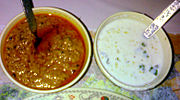Last Updated on: 16th September 2020, 01:19 pm
PAKISTAN'S BEST KEPT SECRETS:
EXPLORING ITS PLACES, FOOD, PEOPLE, CULTURE, AND AN ENDURING MUGHAL & BRITISH HERITAGE
COMMISSIONED & EDITED BY BRITISH & FAR EAST TRADERS & PARTNERS

BIRIYANI
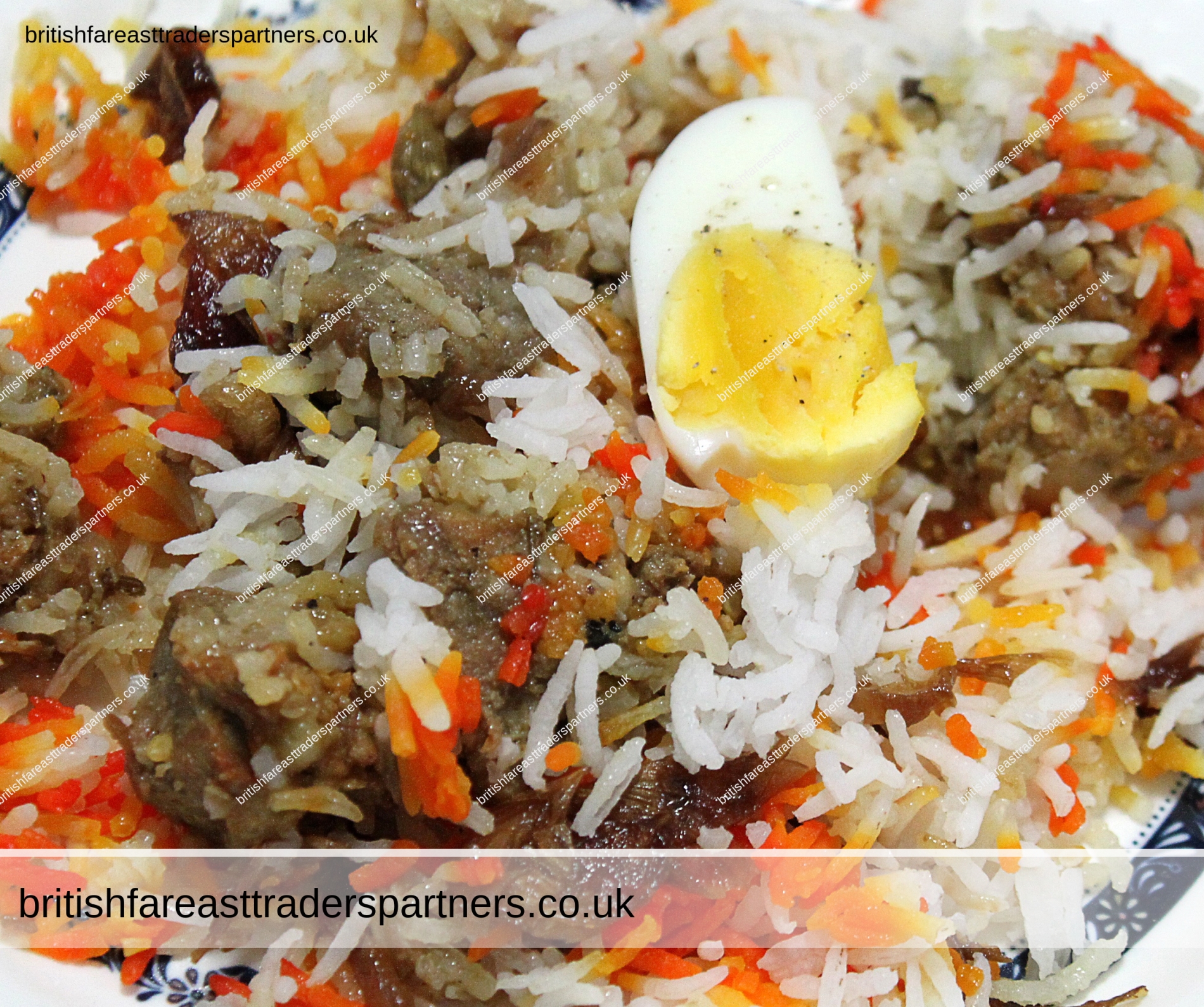
Biryani is a mixed rice dish with its origins among the Muslims of the Indian subcontinent. It can be compared to mixing a curry, later combining it with semi-cooked rice separately. This dish is especially popular throughout the Indian subcontinent, as well as among the diaspora from the region. It is also prepared in other regions such as Iraq. It is made with Indian spices, rice, meat (chicken, goat, pork, lamb, prawn, or fish), vegetables or eggs. The word ‘biryani’ is derived from a Persian word, birian, which means fried before cooking. It is one the most popular dishes which has acquired a niche for itself in South Asian cuisine.
ETYMOLOGY
Biryani (بریانی) is a Hindustani word derived from the Persian language, which was used as an official language in different parts of medieval India by various Islamic dynasties. One theory states that it originated from birinj (Persian: برنج), the Persian word for rice. Another theory states that it is derived from biryan or beriyan (Persian: بریان), which means “to fry” or “to roast”.
ORIGIN
The exact origin of the dish is uncertain. In North India, different varieties of biryani developed in the Muslim centers of Delhi (Mughlai cuisine), Lucknow (Awadhi cuisine) and other small principalities. In South India, where rice is more widely used as a staple food, several distinct varieties of biryani emerged from Telangana (Hyderabad), Tamil Nadu (Ambur, Thanjavur, Chettinad, Salem, Dindigal), Kerala (Malabar), and Karnataka, where Muslim communities were present.
According to historian Lizzie Collingham, the modern biryani developed in the royal kitchens of the Mughal Empire (1526–1857) and is a mix of the native spicy rice dishes of India and the Persian pilaf. Indian restaurateur Kris Dhillon believes that the dish originated in Persia, and was brought to India by the Mughals. Another theory claims that the dish was prepared in India before the first Mughal emperor Babur came to India. The 16th-century Mughal text Ain-i-Akbari makes no distinction between biryanis and pilaf (or pulao): it states that the word “biryani” is of older usage in India. A similar theory, that biryani came to India with Timur‘s invasion, appears to be incorrect, because there is no record of biryani having existed in his native land during that period.
According to Pratibha Karan, who authored the book Biryani, the biryani is of South Indian origin, derived from pilaf varieties brought to the Indian subcontinent by the Arab traders. She speculates that the pulao was an army dish in medieval India. The armies, unable to cook elaborate meals, would prepare a one-pot dish where they cooked rice with whichever meat was available. Over time, the dish became biryani due to different methods of cooking, with the distinction between “pulao” and “biryani” being arbitrary. According to Vishwanath Shenoy, the owner of a biryani restaurant chain in India, one branch of biryani comes from the Mughals, while another was brought by the Arab traders to Malabar in South India.
DIFFERENCE BETWEEN BIRYANI & PULAO
-
-
-
Two biryani accompaniments: mirchi ka salan and dahi chutney.
Pilaf or pulao, as it is known in the Indian subcontinent, is another mixed rice dish popular in the cuisines of the Indian subcontinent, Central Asia, and Middle Eastern cuisine. Opinions differ on the differences between pulao and biryani, and whether actually there is a difference between the two.
According to Delhi-based historian Sohail Nakhvi, pulao tends to be comparatively plainer than the biryani and consists of meat (or vegetables) cooked with rice. Biryani, on the other hand, contains more gravy (due to the use of yakhni in it), and is often cooked for longer, leaving the meat or vegetables more tender. Biryani is also cooked with additional dressings. Pratibha Karan states that while the terms are often applied arbitrarily, the main distinction is that a biryani consists of two layers of rice with a layer of meat (or vegetables) in the middle; whereas, the pulao is not layered.
Colleen Taylor Sen lists the following distinctions between biryani and pulao:
- Biryani is the primary dish in a meal, while the pulao is usually a secondary accompaniment to a larger meal.
- In biryani, meat and rice are cooked separately before being layered and cooked together. Pulao is a single-pot dish: meat and rice are simmered in a liquid until the liquid is absorbed. However, some other writers, such as Holly Shaffer (based on her observations in Lucknow), R. K. Saxena and Sangeeta Bhatnagar have reported pulao recipes in which the rice and meat are cooked separately and then mixed before the dum cooking.
- Biryanis have more complex and stronger spices compared to pulao. The British-era author Abdul Halim Sharar mentions the following as their primary difference: biryani has a stronger taste of curried rice due to a greater amount of spices.
INGREDIENTS
Ingredients vary according to the region and the type of meat used. Meat (of either chicken, goat, beef, lamb, prawn or fish) is the prime ingredient with rice. As is common in dishes of the Indian subcontinent, vegetables are also used when preparing biryani, which is known as vegetable biriyani. Corn may be used depending on the season and availability. Navratan biryani tends to use sweeter, richer ingredients such as cashews, kismis and fruits, such as apples and pineapples.
The spices and condiments used in biryani may include ghee (clarified butter), nutmeg, mace, pepper, cloves, cardamom, cinnamon, bay leaves, coriander, mint leaves, ginger, onions, tomatoes, green chilies, and garlic. The premium varieties include saffron. In all biryanis, the main ingredient that accompanies the spices is the chicken or goat meat; special varieties might use beef or seafood instead. The dish may be served with dahi chutney or raita, korma, curry, a sour dish of aubergine (brinjal), boiled egg, and salad.
Text is available under the Creative Commons Attribution-ShareAlike License; additional terms may apply.
SOURCE:
https://en.wikipedia.org/wiki/Biryani
CHAPLI KEBAB
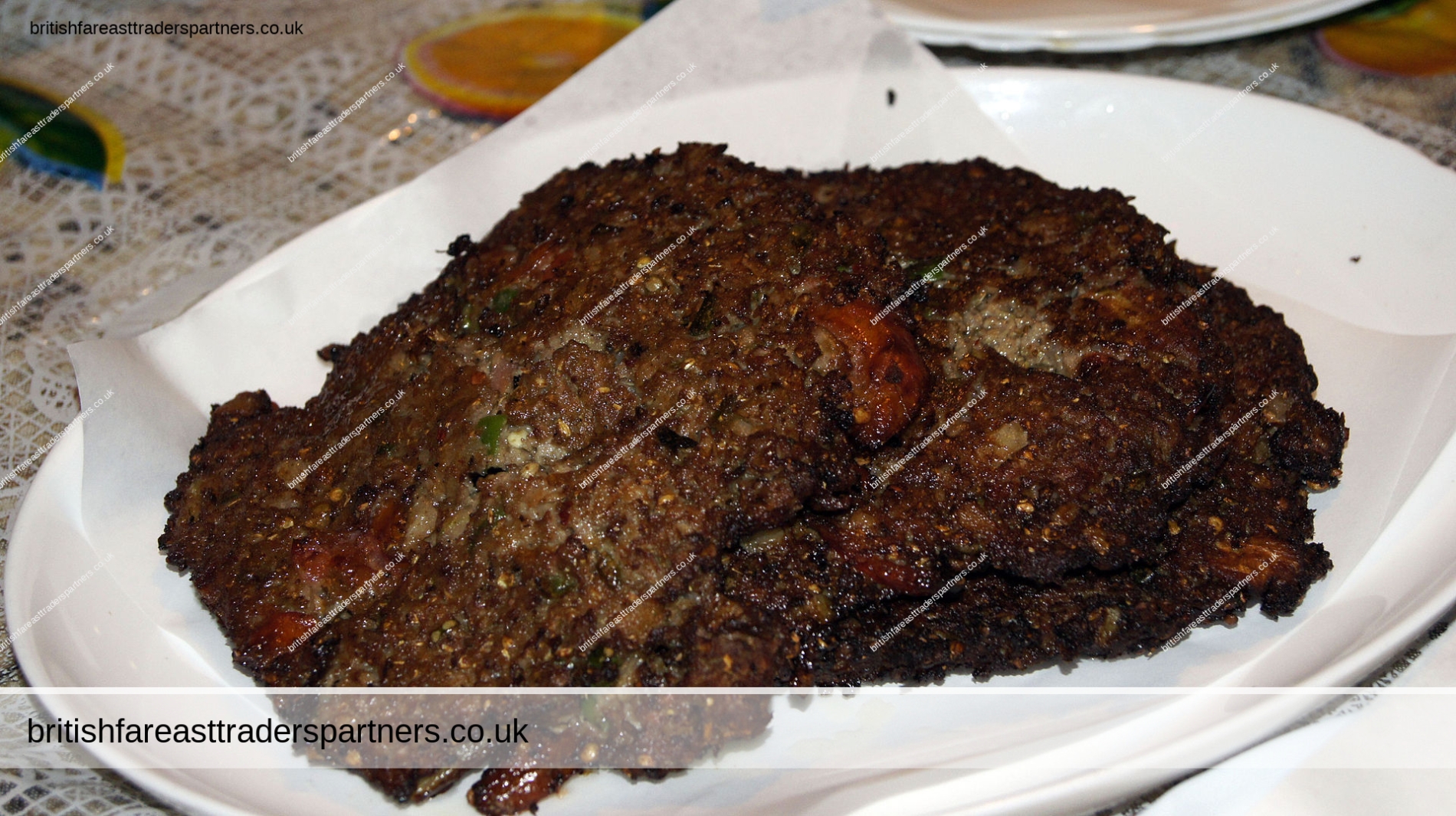
Image credits: https://en.wikipedia.org/wiki/Chapli_kebab#/media/File:Chapli_Kebab.jpg
Chapli kebab is a Mughlai-influenced Pashtun-style minced kebab, usually made from ground beef, mutton or chicken with various spices in the shape of a patty. It originates from Peshawar, what is today northwest Pakistan, and is also known as the Peshawari kebab.
The chapli kebab is a popular barbecue and street food throughout Khyber Pakhtunkhwa and other parts of Pakistan, as well as in eastern Afghanistan and India. It can be served and eaten hot with naan bread, rice, or in buns and sandwiches such as in a bun kebab.
ORIGINS
Mughal culinary influences in the region popularised a number of kebab dishes, resulting in local recipes such as the chapli kebab. The name chapli is said to be derived from the Pashto word chaprikh, meaning “flat” – alluding to the kebab’s light, round and flattened texture. Another theory is that the name is derived from chappal, the local word for sandals – implying the average shape and size of a kebab, which resembles that of a front part of the chappal sole.
The city of Peshawar, where the recipe took hold, has over 2,000 kebab houses that serve the chapli kebab. Such eateries have rapidly expanded in other cities as well. Today, the chapli kebab is featured on the menu of South Asian restaurants across the world.
INGREDIENTS & PREPARATION
The chapli kebab is prepared with raw, marinated mince and the meat can be either beef or lamb/mutton. The main ingredients include wheat flour, different herbs and spices such as chili powder, coriander leaves, followed by smaller quantities of onions, tomatoes, eggs, ginger, coriander or cumin seeds, green chillies, corn starch, salt and pepper, baking powder, as well as a seasoning of lemon juice or pomegranate seeds.
The kebabs can be fried shallow or deep in vegetable cooking oil over medium heat. Some chefs fry the kebabs in lamb fat over wood-fired stoves to lend an organic flavour. This approach is avoided by other gastronomists, citing health-conscious reasons.
SERVING
Once cooked, chapli kebabs can be served and garnished with parsley, chopped onions and tomatoes, along with other accompaniments such as various chutney sauces, salad, yoghurt, pickles or nuts. The chapli kebab is best served aromatic, moist and spicy. It is considered a specialty of Pashtun cuisine and often served to guests. The kebab is commonly consumed in meals with bread such as naan, rice dishes such as Kabuli pulao, or wrapped in fast food. In winters, green tea such as kahwah may traditionally be served alongside it, while cold drinks are preferred in the summers.
Text is available under the Creative Commons Attribution-ShareAlike License; additional terms may apply.
SOURCE: https://en.wikipedia.org/wiki/Chapli_kebab
SAJJI

CHAAT

BRAIN MASALA

KATAKAT

PARATHA
DUD PATHI
MUTTON KORMA
SAAG
PLACES OF INTEREST
HUNZA VALLEY

NEELUM VALLEY
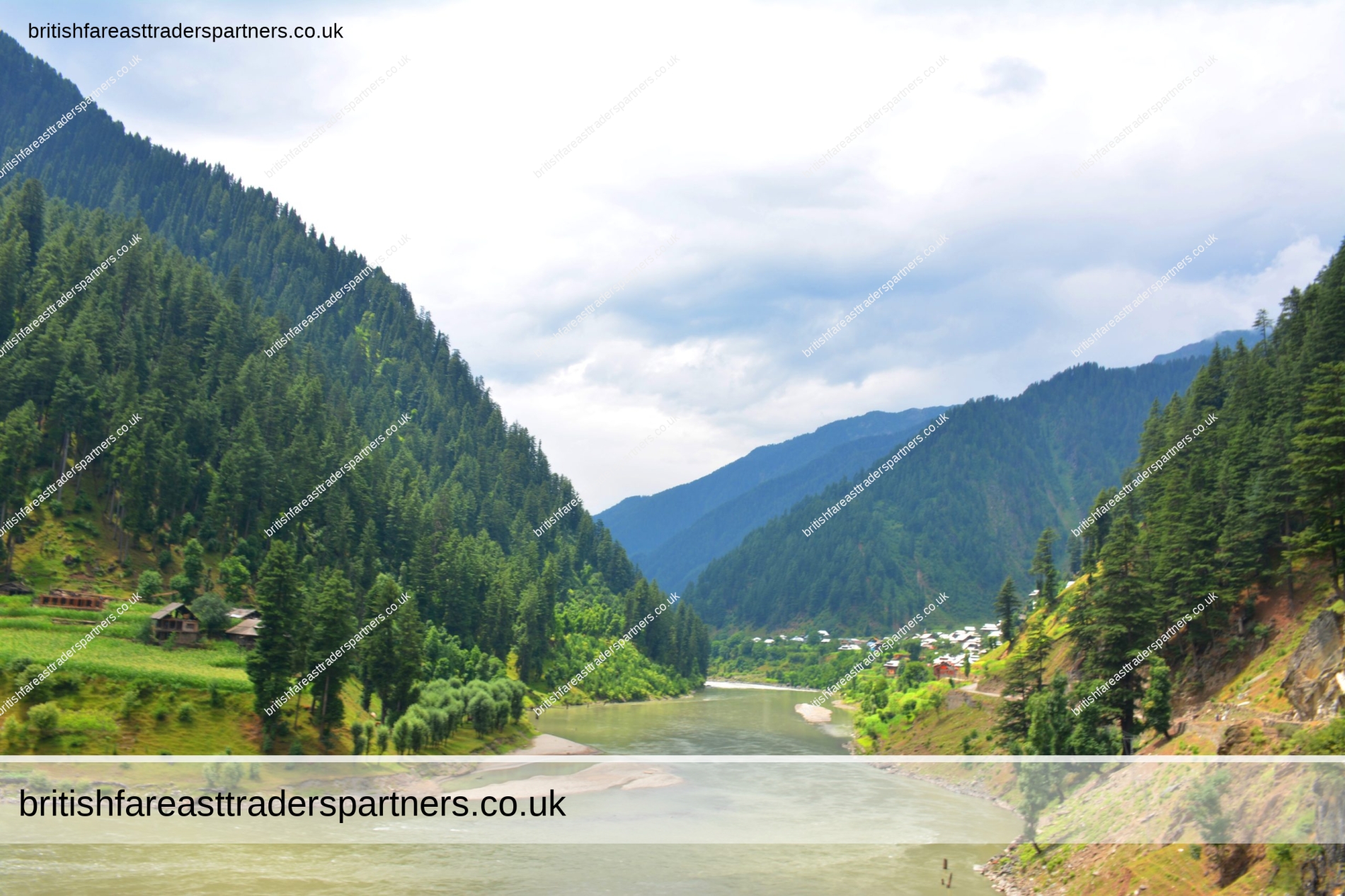
SWAT VALLEY

KALASH VALLEY
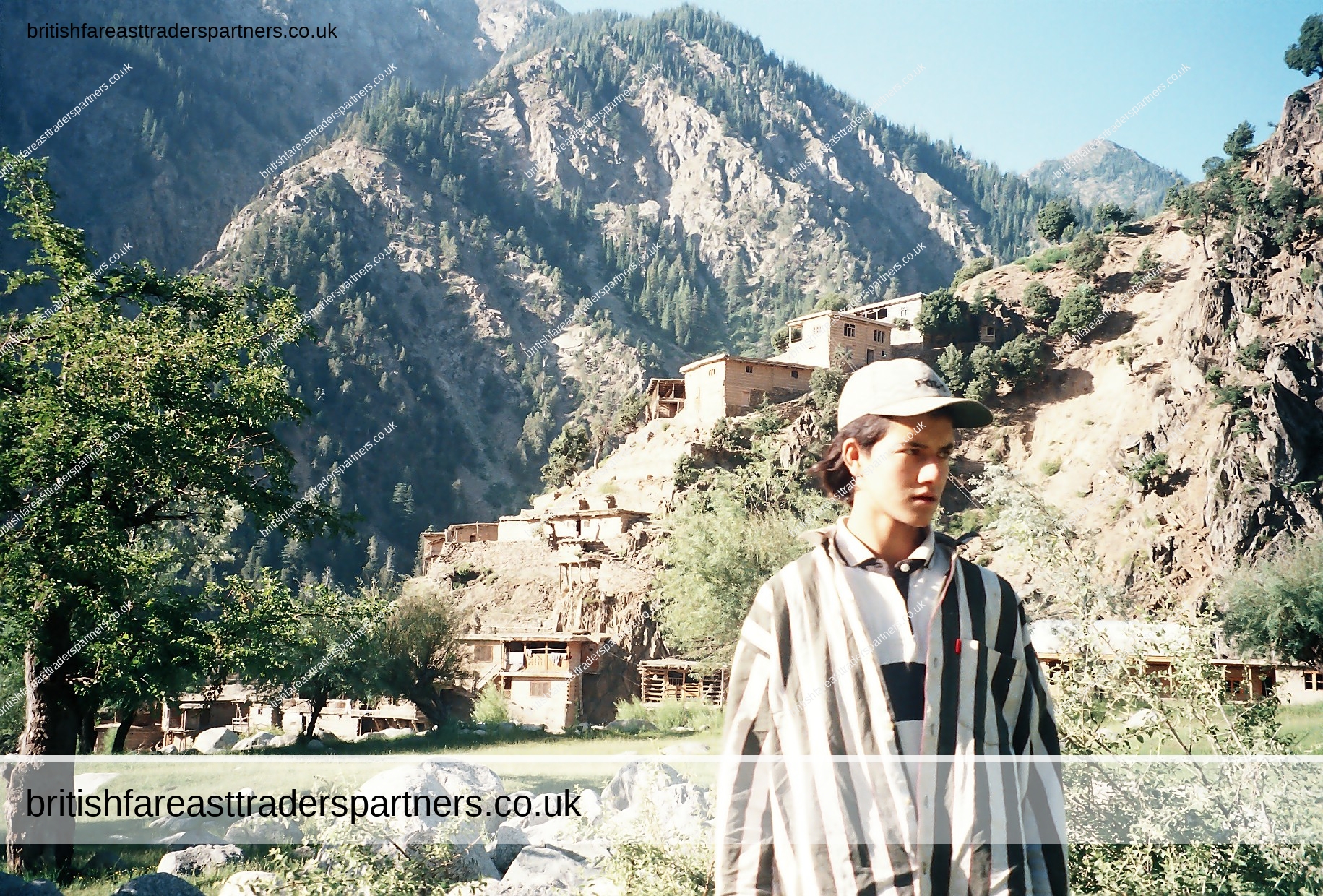
MURREE

SKARDU

NARAN KAGHAN VALLEY

ZIARAT

LAKE SAIF-UL-MALOOK

SHANDUR TOP

BADSHAHI MASJID

MAZAR-E-QUAID

PIR SOHAWA / MONAL

RAWALAKOT

LEEPA VALLEY

HUSHE VALLEY

MASJID WAZIR KHAN

BADSHAHI MOSQUE

SHALIMAR GARDENS

FORTRESS STADIUM

LAHORE MUSEUM

LAHORE WAGAH BORDER

FOOD STREET AND M M ALAM ROAD

LAHORE FORT

ANARKALI BAZAAR AND LIBERTY MARKET

WALLED CITY OF LAHORE

MINAR E PAKISTAN

MINI GOLF CLUB

CHAUBURJI

LAHORE RAILWAY STATION

DAATA DURBAR

DELHI GATE

JEHANGIR’S TOMB

LAHORE HIGH COURT

PAK TEA HOUSE

MUBARAK HAVELI

Thank You...
NIL RETURNED. TRY OUR SEARCH BAR


